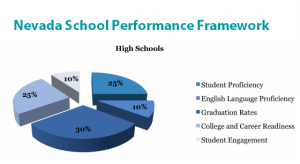 Latest Advance CTE resource describes strategies to expand career pathways opportunities to rural learners
Latest Advance CTE resource describes strategies to expand career pathways opportunities to rural learners
Rural communities all too often face scarce funding, instructors and facilities, forcing institutions to choose between offering a variety of introductory courses across a breadth of subjects or providing more narrowly focused, sequenced programs within one or two priority Career Clusters®. Providing learners access to diverse career pathways in rural areas is a persistent challenge for all states.
Today Advance CTE released the latest brief in the CTE on the Frontier series to help states identify promising strategies for expanding the variety of career pathways available in rural areas. The brief profiles how states such as Nebraska, Alaska, North Dakota and Idaho have leveraged strategic partnerships and new technologies to reach economies of scale.
In North Dakota, for example, rural learners are connected remotely to instructors at different campuses by a live broadcast network called Interactive Television, or ITV. Districts and regional technical centers come together to inventory all of the courses available in their region and open up enrollment to remote students. Participating schools receive a 4 percent reimbursement per receiving school to incentivize participation.
Meanwhile, state leaders in Idaho are working to balance virtual instruction through Idaho Digital Learning with work-based learning and Career Technical Student Organization participation to ensure hands-on learning isn’t lost in a virtual classroom. Instead of converting all CTE courses to be offered online, Idaho has adapted a few introductory courses to free up in-school teaching capacity to focus on more advanced coursework. The state is also working to align digital courses with college and career pathways — some Idaho Digital Learning courses are even eligible for dual credit — and requires CTE students taking online classes to engage in hands-on learning.
The latest CTE on the Frontier brief demonstrates how states can leverage partnerships and technology to reach economies of scale and offer a wider breadth of career pathways to rural learners. Earlier briefs in the series examine how states can ensure program quality and connect learners to the world of work.
CTE on the Frontier: Providing Learners Access to Diverse Career Pathways was developed through the New Skills for Youth initiative, a partnership of the Council of Chief State School Officers, Advance CTE and the Education Strategy Group, generously funded by JPMorgan Chase & Co.
Austin Estes, Policy Associate


 nts at Tolsia High School in West Virginia have created an industry-validated carpentry business within their classroom. Students at Haynesville Junior/Senior High School in Louisiana are connected with physical therapists, diesel mechanics, a marriage and family counselor and other industry professionals on a biweekly basis through virtual “micro-industry engagements.” In North Dakota, nursing students can earn their associate’s degree through one of four community colleges, while taking their classes at rural hospitals and health care facilities. And in Montana, a mobile laboratory is deployed across the state to engage students around various career opportunities.
nts at Tolsia High School in West Virginia have created an industry-validated carpentry business within their classroom. Students at Haynesville Junior/Senior High School in Louisiana are connected with physical therapists, diesel mechanics, a marriage and family counselor and other industry professionals on a biweekly basis through virtual “micro-industry engagements.” In North Dakota, nursing students can earn their associate’s degree through one of four community colleges, while taking their classes at rural hospitals and health care facilities. And in Montana, a mobile laboratory is deployed across the state to engage students around various career opportunities. Eighteen states
Eighteen states